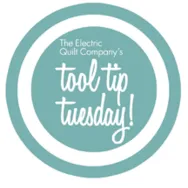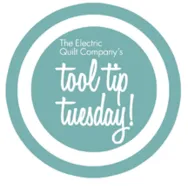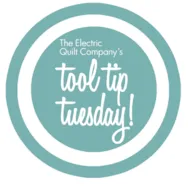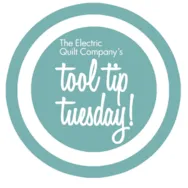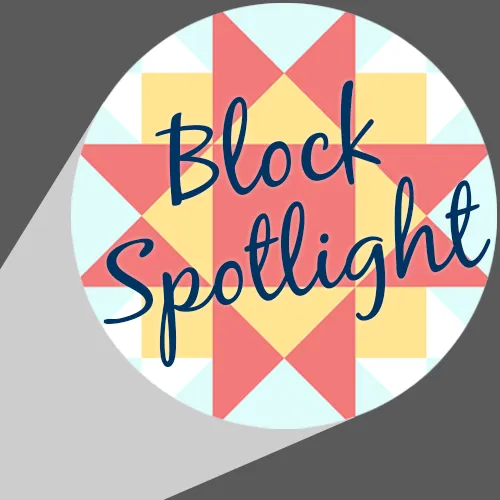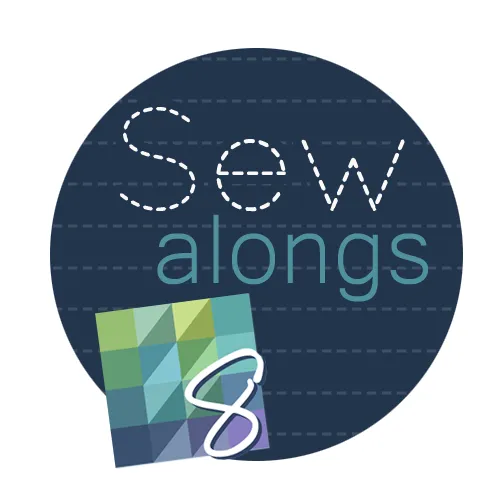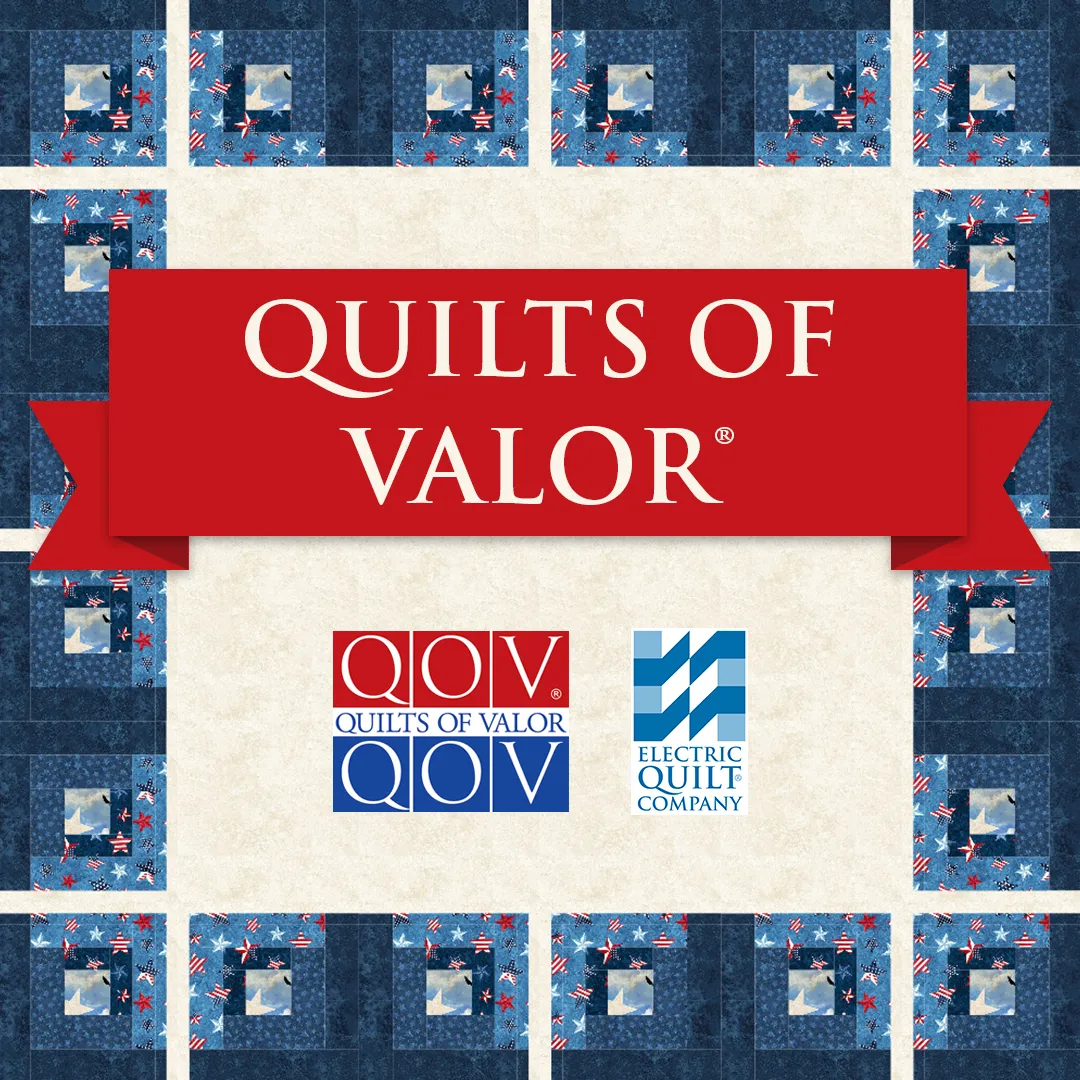The Line tool The Line tool draws straight lines one segment at a time. To Draw a Line Segment 1. Position the cursor where you want the segment to begin. 2. Press the left mouse button to anchor the initial node. 3. Drag the mouse and the line will follow from the initial node. 4. Release the mouse to drop and anchor the end node. The Line Tool Precision Bar With the Precision Bar turned on, click the Snap to Grid Points button. This will snap your line segment to the grid points on the worktable drawing perfect line segments. You can also activate Snap to Grid Points through the Drawing Board Setup on the Block worktable, or the Drawing Board and Hoop Setup on the Stitching worktable. All segments of the drawing must connect with each other and the drawing must connect with the block outline . When EQ
Quick Tip Tuesday
Tool Tip Tuesday! – The Line Tool
Posted 09-08-2015 by Heidi | Posted in: Quick Tip Tuesday Tool Tip Tuesday
Tool Tip Tuesday! – The Set Thread Tool
Posted 09-01-2015 by Heidi | Posted in: Quick Tip Tuesday Tool Tip Tuesday
The Set Thread Tool The Set Thread tool allows you to add thread to blocks, motifs, stencils and your entire quilt. This feature makes your finished quilts and blocks look more realistic. Using the Set Thread Tool 1. Click on a thread in the palette to select it. 2. Choose from any of the thread properties to make the thread more realistic. 3. Click on the stencil, motif, or block to color the patch. 4. Click Add to Sketchbook to save the new block coloring in the Sketchbook. Please note: If you choose to modify your thread using the thread properties, be sure to put a check in the white box to select the property first. If you change the thread style or weight without checking the white box, the property will not be implemented. To color the same patch in all the blocks of your quilt at once, hold
Tool Tip Tuesday! – The Spraycan Tool
Posted 08-25-2015 by Heidi | Posted in: Quick Tip Tuesday Tool Tip Tuesday
The Spraycan Tool The Spraycan tool paints matching patches in a block using fabrics or colors. The Spraycan tool is only available on Layers 1 and 2. 1. Click on a fabric in the palette to select it. 2. Click a patch in the quilt. All similarly colored fabric in that block will color with the new fabric. CTRL + click colors the same patch of that same color in all matching blocks (Layers 1 or 2). ALT + click colors the same patch of that color in alternate blocks (Layer 1 only). • If you’d like a reminder of this and other tools in EQ7, check out the Display Dynamic Help tool. • To print this: Click the title (Tool Tip Tuesday! - The Spraycan Tool) and then print as normal.
Tool Tip Tuesday! – The Erase Block Tool
Posted 08-18-2015 by Heidi | Posted in: Quick Tip Tuesday Tool Tip Tuesday
The Erase Block Tool Use this tool to remove a block from the quilt. Click the block you want to erase. The Ctrl key on your keyboard + click on a block will erase every block. The Alt key on your keyboard + click on a block will erase alternate blocks. However, using Ctrl + click and Alt + click on some layout styles will not work the same as they do on Horizontal/Straight layouts. You may have to repeat the Ctrl + click and Alt + click to achieve the desired goal. The Erase Block tool is not recommended for Custom Set quilts, Layer 2 or 3 because it will leave a blank block placeholder. In these cases, use the Adjust tool to select your block, then press your keyboard Delete key on your keyboard to remove the block. • If you’d like a reminder of this and
Tool Tip Tuesday! – The Customize Toolbars Tool
Posted 08-11-2015 by Heidi | Posted in: Quick Tip Tuesday Tool Tip Tuesday
The Customize Toolbars Tool If you don’t see the tool you are looking for, try clicking Customize Toolbars and adding the tool. The Customize Toolbars option allows you to modify your toolbars from their default settings. This option is available on all toolbars on the Quilt worktable and the Block worktable. Button Size and Style will affect both worktables and will be remembered when EQ7 is closed. Also, if you choose to Restore Default Tools, you will lose your settings on both worktables. Using the Customize Toolbars Option to Modify the Tools: 1.Click on the Customize Toolbars button at the end of the toolbar. Or you may right-click with your mouse on any of the tool images on the toolbar. 2. Choose your option from the pop-up menu. • If you’d like a reminder of this and other tools in EQ7, check out the Display Dynamic Help tool. • To
Tool Tip Tuesday! – The Shape Tool
Posted 08-04-2015 by Heidi | Posted in: Quick Tip Tuesday Tool Tip Tuesday
The Shape Tool The Shape tool allows you to edit and change the shape of patches by moving nodes to reshape the patch, as well as adding nodes to line segments. To Change the Shape of the Patch: 1. Position the mouse over a node. 2. Click on the node with your left mouse button, hold and drag it to a new location. Double-click on a segment to add a note. Click, hold and drag the node to a new location. The Pieced layer of the PatchDraw worktable is permanently set to Snap to Grid. When you are moving nodes on the worktable, you will notice the node snapping to the closest grid point. Be sure that your patches don’t overlap one another. You may find it just as easy to redraw a block than to edit an existing block. To Add and Delete Nodes: 1. Position the mouse
Tool Tip Tuesday! – The Freehand Tool
Posted 07-28-2015 by Heidi | Posted in: Quick Tip Tuesday Tool Tip Tuesday
The Freehand Tool Use this tool to trace designs, or draw freehand. To draw a line 1. Position your mouse cursor on the worktable where you want the line to begin. 2. Click, hold and drag to draw your line. 3. Release the mouse to finish your line. To draw a patch 1. Position your mouse cursor on the worktable where you want the line to begin. 2. Click, hold and drag to draw your patch. 3. While still holding down the mouse button, hover the cursor over the initial node. 4. Release the mouse to finish your patch. Tip: Before releasing the mouse button, you can erase a portion of a freehand curve by holding down your keyboard SHIFT key and dragging backwards over the curve. Adjusting the Freehand Smoothness The Freehand tool is a great way to trace images and guides. The Freehand tool uses Bezier curves. They


